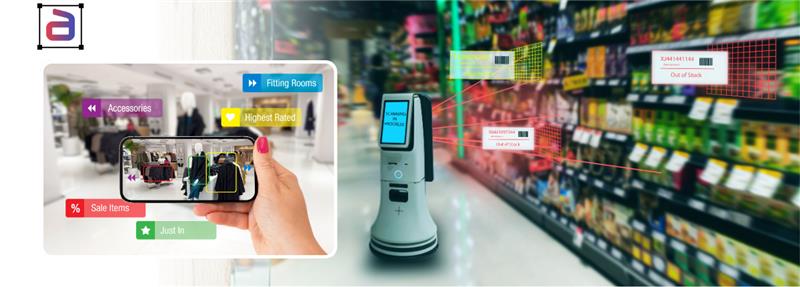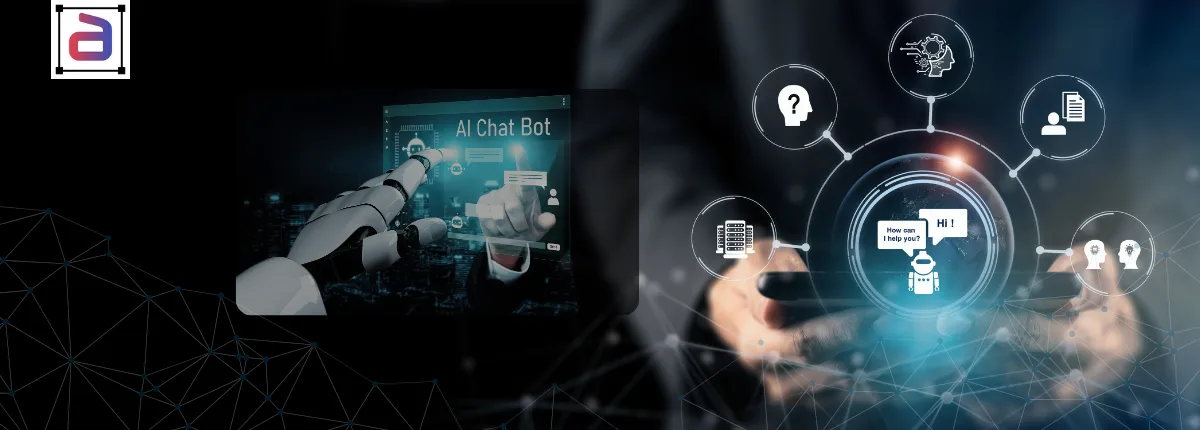In the age of language AI, raw text is like unmined ore. To extract value, we must annotate it. At Annotera, we believe that high-quality text annotation is not just a preparatory step — it’s the foundation on which robust NLP (Natural Language Processing) models are built. In this post, we explore the major annotation types — entity recognition, sentiment labeling, intent detection and more — and discuss how they power downstream applications, best practices, and challenges in scaling annotation.
Why Text Annotation Matters
Unstructured text data dominates the digital world: emails, social posts, reviews, transcripts, legal documents, support tickets, and more. According to estimates, by 2025 about 80% of all data will be unstructured. Without structure, machines cannot reliably learn from it. Text annotation matters because it transforms raw language data into structured insights that fuel NLP and AI applications. By labeling entities, sentiments, and relationships, it enables machines to understand context and meaning. Furthermore, accurate text annotation drives smarter chatbots, better search results, and more human-like language understanding across industries.
Supervised learning methods — which remain central in applied NLP — require labeled data. Annotation transforms raw text into structured, labeled examples that teach models to recognize patterns. Poor or inconsistent annotation leads to downstream failures: wrong entity tags, misinterpreted sentiments, or misrouted chatbot responses.
In fact, in many NLP deployments, performance degradation is traced back to the annotation layer rather than the modeling layer. Hence, annotation is a cornerstone, not an afterthought.
Major Types of Text Annotation
Text annotation can take several forms depending on the NLP task at hand. Each annotation type teaches machines a different way to understand and interpret human language — from recognizing entities to identifying emotions and intentions. Below are the most common and impactful types.
1. Entity Recognition (NER)
Named Entity Recognition (NER) involves identifying and labeling specific elements within text, such as names of people, organizations, locations, dates, or numerical values. By marking these entities, we help NLP systems link unstructured text to structured information.
Real-world examples:
- Extracting key entities from legal contracts or medical reports.
- Building knowledge graphs for enterprise search engines.
- Automating document classification and content tagging.
Example:
“On August 10, 2025, Apple Inc. opened a new branch in Bengaluru.”
Here, “Apple Inc.” is tagged as an Organization, “August 10, 2025” as a Date, and “Bengaluru” as a Location.
Why it matters:
NER is foundational for downstream NLP tasks such as information retrieval, question answering, and event extraction. A well-annotated NER dataset can dramatically improve model comprehension and precision across languages and domains.
2. Sentiment Annotation
Sentiment annotation assigns emotional or opinion-based labels to text, such as positive, negative, or neutral. In more advanced cases, emotions like joy, anger, or frustration may be captured to offer a richer emotional understanding.
Applications:
- Monitoring customer satisfaction through product or service reviews.
- Tracking public opinion on brands or political issues via social media.
- Analyzing feedback in call transcripts or chat logs for service improvement.
Challenges:
Human emotion is nuanced — sarcasm, cultural differences, or mixed opinions can make labeling tricky. Establishing clear annotation guidelines and using inter-annotator agreement (IAA) checks are essential for consistency and accuracy.
“Sentiment annotation bridges the gap between what customers say and what they mean — giving NLP models the emotional intelligence they need.”
3. Intent Annotation
Intent annotation focuses on understanding why a user expresses something — identifying the purpose behind their text or speech. Common intent categories include BookFlight, CancelOrder, TrackShipment, or RequestSupport.
Applications:
- Chatbots and digital assistants to interpret and respond accurately.
- Routing customer tickets to the right departments.
- Voice-based systems that map spoken queries to specific commands.
Example:
“I’d like to return my recent purchase.” → Intent: ReturnOrder
“Can you tell me the nearest store?” → Intent: FindStoreLocation
Value:
Accurate intent labeling allows conversational AI to feel more “human.” When combined with entity recognition (for slot-filling), it enables full task automation — like booking appointments or processing refunds seamlessly.
4. Advanced Text Annotations
While entity, sentiment, and intent annotations form the backbone of NLP, deeper insights often come from advanced labeling layers such as:
- Relation Annotation: Defines how two entities are connected (e.g., Person–works_at–Company).
- Coreference Annotation: Links pronouns and phrases referring to the same entity (e.g., “John said he will join” → “he” refers to “John”).
- Semantic Role Labeling: Identifies the function of words in a sentence (e.g., who performed an action, what was affected, and how).
- Entity Linking: Associates identified entities with entries in a knowledge base like Wikidata or company databases.
These higher-order annotations help models move from surface understanding to contextual comprehension, improving performance in tasks like summarization, information extraction, and reasoning.
Best Practices & Strategies in Text Annotation for NLP
Annotation is more than just tagging. Implementing best practices in text annotation for NLP ensures accuracy, consistency, and scalability. Using clear labeling guidelines, multi-level reviews, and domain-specific taxonomies enhances data quality. Moreover, combining automation with human expertise helps refine annotations, ultimately building more reliable, context-aware NLP models that perform effectively in real-world applications. To scale while maintaining quality, consider these practices.
1. Clear, Detailed Guidelines
Ambiguities arise frequently. A robust annotation guideline should:
- Define label scopes, boundary rules, exceptions.
- Provide positive and negative examples.
- Address tricky cases (nested entities, overlapping spans, implicit intents).
- Be iteratively improved based on annotator feedback.
2. Annotator Training & Validation
Train annotators on the domain and send them calibration tasks. Use Inter-Annotator Agreement (IAA) metrics like Cohen’s Kappa or Fleiss’ Kappa to measure consistency. For difficult items, have adjudication by expert reviewers.
3. Human-in-the-Loop + Automation / Active Learning
Fully manual annotation is costly and slow. The hybrid approach is more scalable:
- Use pre-trained NLP models or heuristics to suggest labels.
- Present high-uncertainty or borderline items to human annotators (active learning).
- Let automations do “easy” cases, and humans correct or confirm.
4. Quality Control & Iteration
- Routinely sample annotated data for quality review.
- Use consensus or majority voting among annotators.
- Monitor performance drift, and retrain annotators or revise guidelines if errors spike.
- Incorporate feedback loops to refine label definitions or edge cases.
5. Domain Adaptation
Domain-specific vocabulary, abbreviations, or styles (e.g. medical, legal, finance) often require custom labels or ontology definitions. Domain-specific training and examples help reduce ambiguity. Many off-the-shelf NER models perform poorly out-of-domain unless fine-tuned with labeled data.
Impact: How Text Annotation For NLP Powers Real-World
Text annotation for NLP has a profound impact on real-world applications, from virtual assistants to sentiment analysis. By labeling entities, intents, and emotions, it helps machines interpret human language accurately. Moreover, this structured understanding powers smarter automation, improved user experiences, and data-driven decision-making across diverse industries and everyday interactions. A well-annotated dataset can dramatically influence a model’s performance. Consider these illustrative stats:
- In many NLP sectors, two-thirds of deployed systems fail, often because they cannot handle edge cases or domain drift — much of which stems from poor annotation.
- In a construction-domain NLP collaboration, annotating 10,000+ articles with domain-tailored labels led to a 50% cost reduction and improved model accuracy. By investing in annotation quality, organizations unlock better entity extraction, more reliable sentiment analysis, robust chatbot intent detection, and executable knowledge graphs.
Why Choose Annotera for Text Annotation For NLP?
At Annotera, we don’t just annotate — we architect annotation ecosystems with text annotation for NLP. Here’s what sets us apart:
- Customized Annotation Pipelines : We tailor label schemas, style guides, and workflows to your domain (e.g. medical, enterprise, e-commerce).
- Hybrid Human + AI Workflow : We leverage AI-assisted suggestions, active learning, and human validation to scale without compromising quality.
- Rigorous QC Frameworks: We enforce inter-annotator agreement, blind reviews, error audits, and continuous improvement loops.
- Scalable & Secure Operations : Whether your dataset is tens of thousands or millions of sentences, we scale with performance SLAs and data confidentiality.
- Domain Expertise : Our annotators are trained in domain-specific contexts (legal, healthcare, finance), reducing ambiguity and guideline revisions.
Conclusion & Looking Forward
Text annotation remains a gatekeeper of NLP quality. The caliber of your labels often determines whether your models succeed or falter in real-world settings. At Annotera, we view annotation not as a commodity service, but as a strategic lever — one that shapes your application’s intelligence, robustness, and reliability.
As NLP evolves — with self-supervised techniques, large foundation models, and zero-shot capabilities — annotation itself is evolving: from brute-force manual labeling to curated AI-assisted annotation flows. Hybrid models, active learning, and even LLM-based annotation are rising fast.
But no matter how advanced the models become, the dictum holds: “data is king, but labels are royalty.” For entity recognition, sentiment detection, intent annotation, and beyond, the quality of your annotations will always echo through your model’s performance.
If your team is building an NLP pipeline or fine-tuning domain models and you need a reliable annotation partner, Annotera is ready to help. Let’s talk and build better language AI — one labeled token at a time.Ready to elevate your NLP models with precise text annotation? Partner with Annotera for expert entity, sentiment, and intent labeling that drives smarter, context-aware AI solutions.


